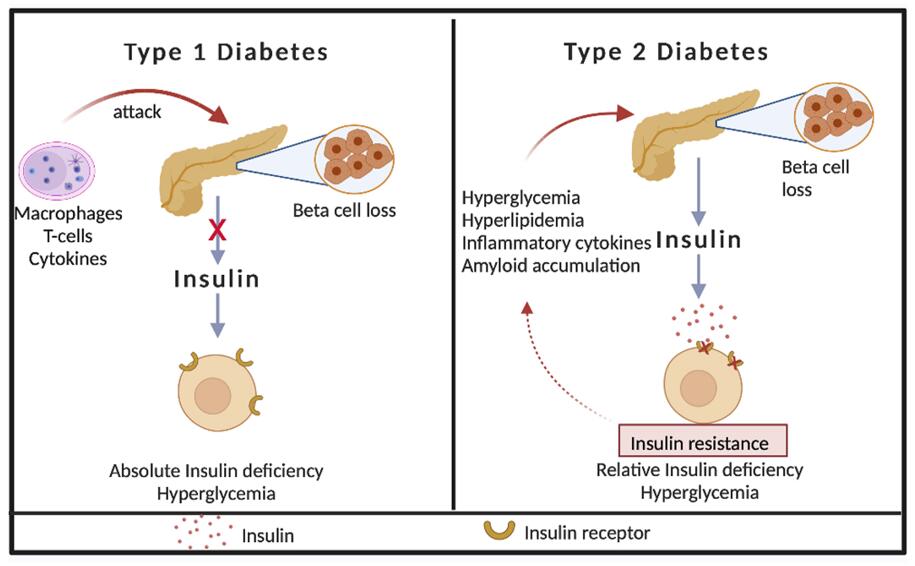Diabetes is a complex metabolic disorder that involves dysfunction in the regulation of blood sugar levels. Cellular models are essential tools in diabetes research for understanding the underlying molecular and cellular mechanisms of the disease, as well as for testing potential treatments.
Two types of diabetes:
 Figure 1. Pathogenesis of type 1 and type 2 diabetes. In type 1 diabetes, pancreatic β-cells are destroyed by immune cells, such as T cells, macrophages, and the cytokines produced by these immune cells, resulting in an absolute deficiency of insulin, leading to hyperglycemia. In type 2 diabetes, pancreatic β-cells are damaged by hyperglycemia, hyperlipidemia, cytokines, and amyloids. Although pancreatic β-cells produce insulin, the insulin level is insufficient to compensate for insulin resistance, resulting in a relative insulin deficiency, leading to hyperglycemia. [1]
Figure 1. Pathogenesis of type 1 and type 2 diabetes. In type 1 diabetes, pancreatic β-cells are destroyed by immune cells, such as T cells, macrophages, and the cytokines produced by these immune cells, resulting in an absolute deficiency of insulin, leading to hyperglycemia. In type 2 diabetes, pancreatic β-cells are damaged by hyperglycemia, hyperlipidemia, cytokines, and amyloids. Although pancreatic β-cells produce insulin, the insulin level is insufficient to compensate for insulin resistance, resulting in a relative insulin deficiency, leading to hyperglycemia. [1]
Creative Bioarray offers highly optimized diabetes-related detection services at the cellular level, aiming to unravel the intricate molecular mechanisms underlying this complex disease. We provide state-of-the-art screening platforms to identify potential drug candidates for diabetes treatment. Our services are designed to meet the specific needs of researchers, delivering accurate and efficient results for advancing the understanding of diabetes and its potential treatments.
Reference:
1. Khin PP, Lee JH, Jun H-S. "Pancreatic Beta-cell Dysfunction in Type 2 Diabetes." European Journal of Inflammation. 2023;21. doi:10.1177/1721727X231154152
Online Inquiry